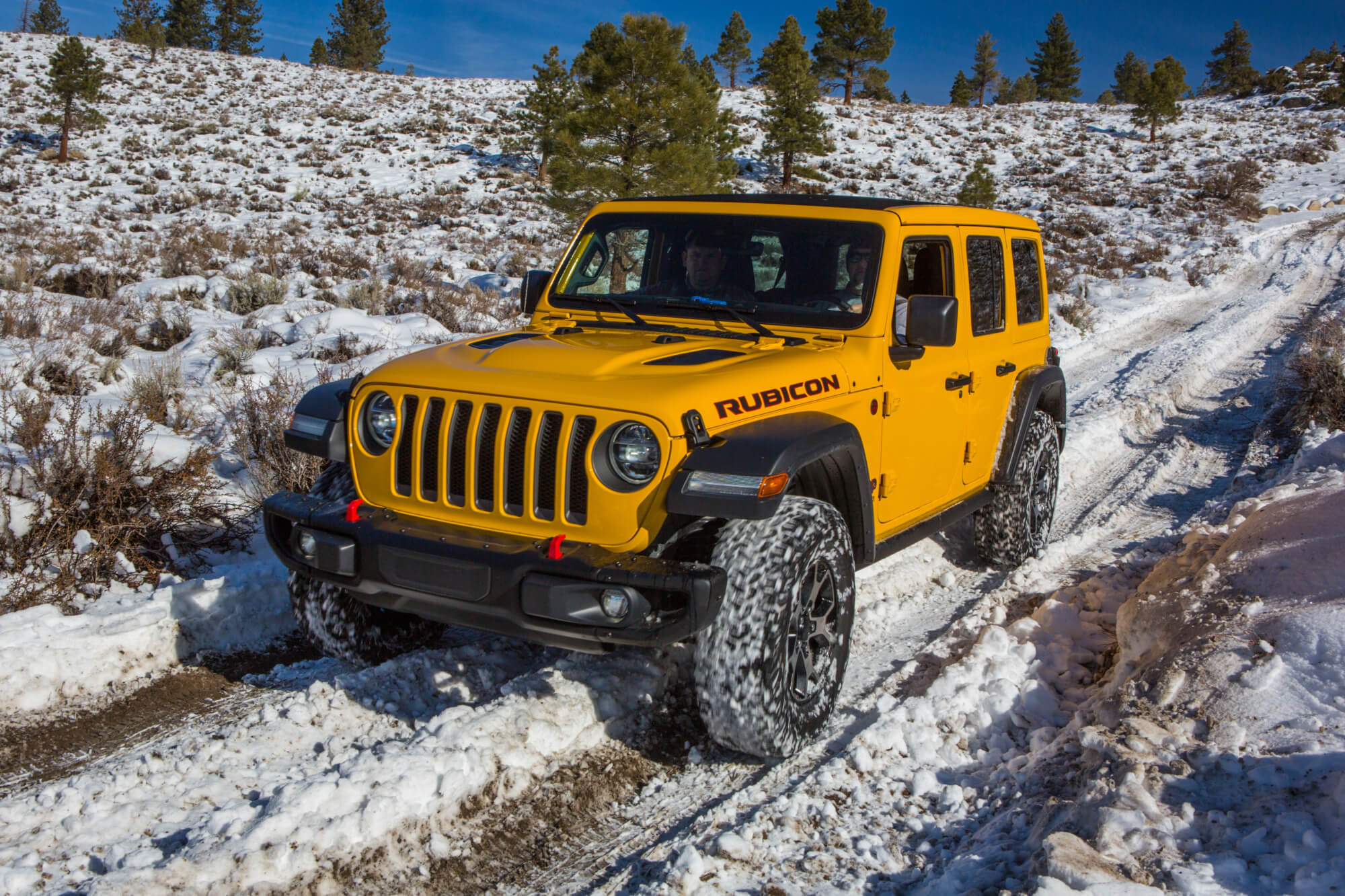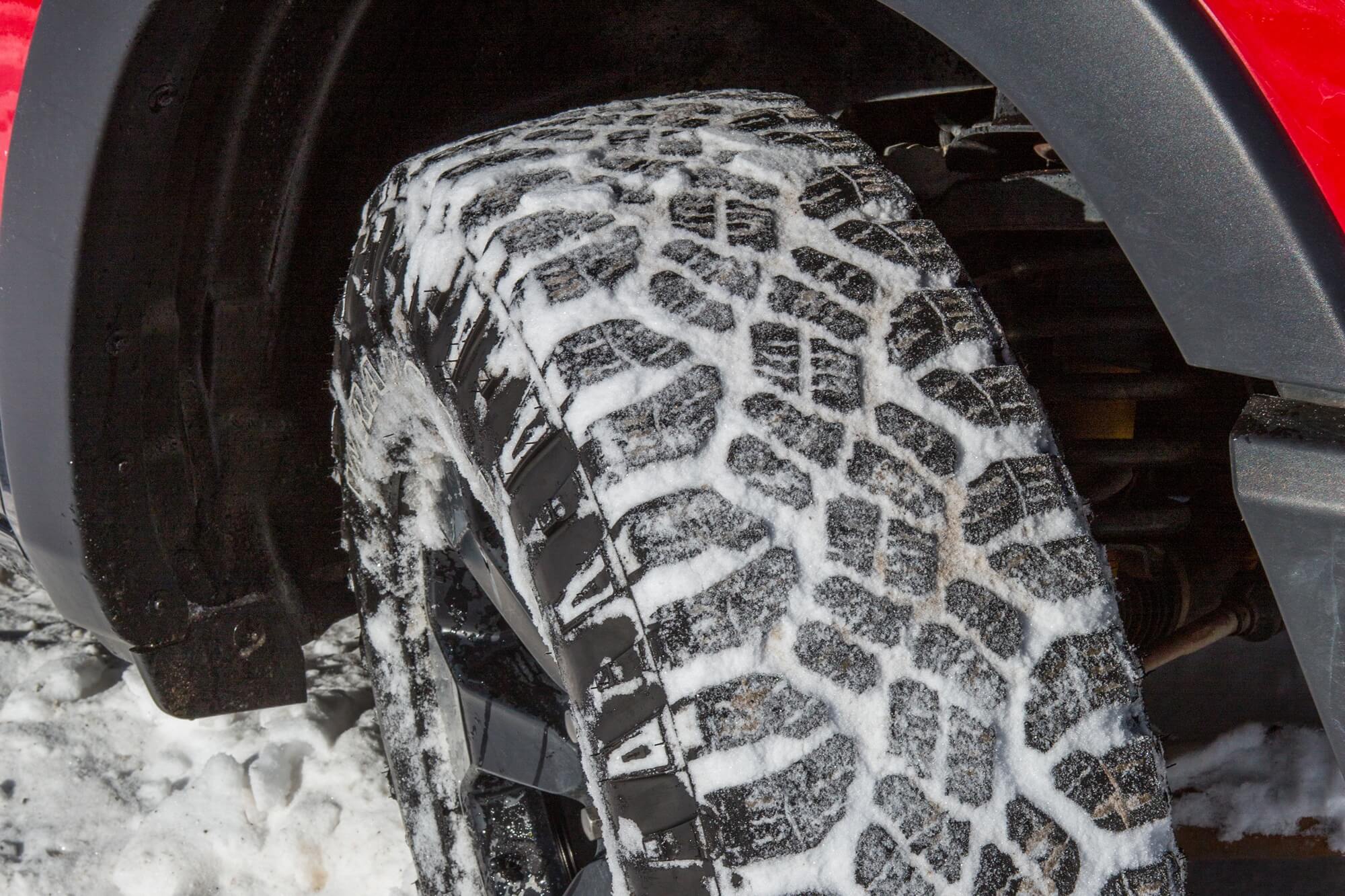
When you think of driving in the snow it may conjure up images in your mind of blasting through huge drifts, but the truth is that most winter driving takes place on icy and snowy roads. The floatation that is necessary in deep snow will just leave you slipping and sliding on icy roads. Instead you want a tire with high contact pressure and lots of voids to let water escape and provide more biting edges for increased traction. While dedicated winter tires are common for cars, they aren’t available in the larger sizes common on 4×4 trucks and Jeeps. We can still look at the attributes that make those tires so effective and find similar features in tires that fit your rig.

It is much more common to find yourself on an icy road than blasting through waist deep snow in your 4×4. In these conditions, note that being in 4WD helps with both traction and braking, but braking distances and cornering ability will be compromised. These compromises can be reduced though by running a tire like the Pro Comp A/T Sport that has staggered lugs and sweeping grooves to maintain traction.

The Goodyear Wrangler Duratrac is one of the best tires we have used on snowy and icy roads. They look aggressive, but much of that is due to the sidewall lugs that aren’t normally in contact with the road. The tread blocks on the Duratrac as staggered and note how each lug contains multiple sipes. The tread on the Duratracs is also relatively soft, which is great for subzero temperatures, but at the expensive of tread life, particularly on heavy vehicles.
All-Terrain versus Mud-Terrain
The big lugs and open voids that make Mud-Terrain tires so effective on the trail actually work against them on snow and ice. Each of those lugs can turn the ice under it into water due to the pressure, and cause hydroplaning as a result. The key to traction on ice is to have channels that will allow water to escape from the tire, and this is accomplished via the sipes that are prevalent on All-Terrain tires. Sipes are small cuts in a tread block that not only allow water to escape, they also provide additional biting edges to maintain traction. Sipes can be straight cuts (and can even be added to your existing tires), but as technology has improved it is more common to see All-Terrain tires with zig-zag shaped sipes that resist tearing and chunking when used off-road.
Three Peak Mountain Snowflake
Don’t just take our word for it though. There are no M/Ts with a Three-Peak Mountain Snowflake rating, but several A/Ts including BFGoodrich All-Terrain KO2s, General Grabber ATXs, Nitto Exo Grapplers, and Goodyear Duratracs have this designation. In ‘99, The US Tire Manufacturers Association (USTMA) created a performance standard to identify passenger and light truck tires that attain a traction index equal to, or greater than 110 (100 being the reference) during the specified American Society for Testing and Materials (ASTM) traction tests on packed snow. Tires meeting the standard are branded with the Three Peak Mountain Snowflake (3PMSF) symbol. Note that this test measures a tire’s acceleration on medium-packed snow. Braking and turning on snow, and traction on ice, are not tested.


What is M+S?
The original definition of M+S (Mud and Snow) tires is based on the geometry of the tread rather than an actual performance standard. The M+S designation was first used to distinguish knobby bias-ply tires from normal passenger car tires. These days you see M+S ratings on most All-Terrain and Mud-Terrain tires, but despite the word “Snow” in the name, it doesn’t mean that they will perform particularly well on snow or ice. The best you can hope for with a Mud and Snow tire is that it gets you past a chain inspection point on the interstate.
Studs and Chains
Some might think of “car culture” as only about cars. Sure, hot-rodders, tuners, low riders, and euro car lovers are all part of it. But there is Studded tires provide amazing traction on ice, and many Mud-Terrain tires can be pinned for studs. The downside is that the studs can’t be removed, and they should only be run on ice. Unless you live someplace where ice is common for several months of the year, they likely are not the best option. Chains limit how fast you can drive down the road, but unlike studs they can be removed and stored when you don’t need them. Chains for larger tires (35-inch and bigger) can be difficult to find, and they are not particularly cheap. They do provide unrivaled traction though.





2